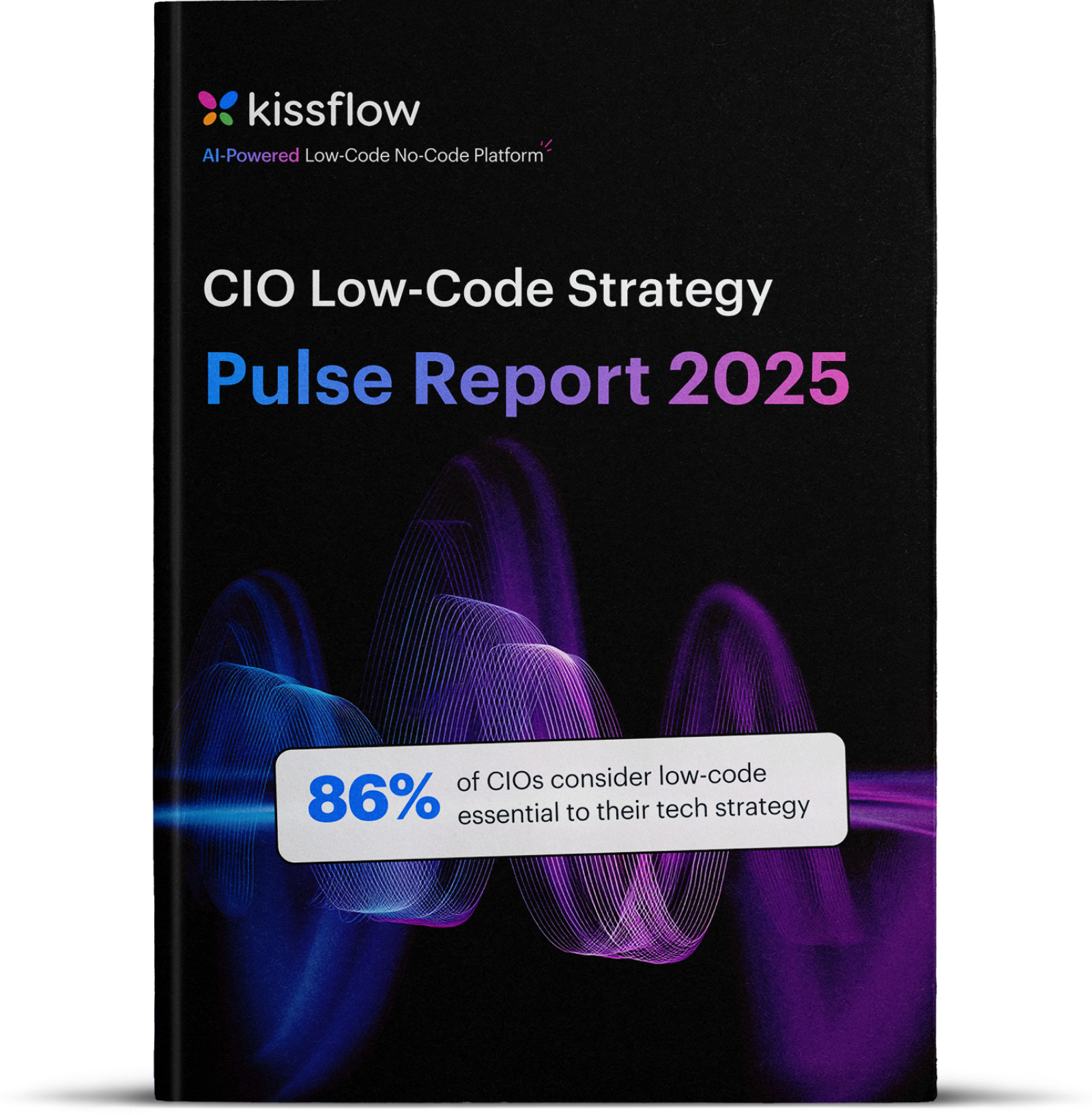Your team just rolled out a sleek front-end interface using a no-code platform. It looks great, the stakeholders are impressed, and deployment took days instead of months. But then reality hits: How do you connect it to your legacy databases? How do you integrate with your existing APIs? How do you ensure your business logic remains secure and scalable?
If this sounds familiar, you're not alone. While no-code platforms have democratized front-end development, the backend remains the linchpin of enterprise functionality. The good news? Modern no-code backend integrations are closing this gap faster than you might think.
The integration gap that's costing you
Here's a sobering reality: only 2 percent of organizations have successfully integrated more than half their applications. The average business now uses over 300 SaaS applications, creating data silos that prevent your teams from making timely decisions.
When your sales team can't access real-time inventory data, or your customer service reps are toggling between seven different systems to resolve a single ticket, you're not just dealing with inefficiency. You're bleeding competitive advantage.
The traditional solution has been custom integration development, but with 92 percent of organizations afflicted by technical debt from legacy systems, throwing more code at the problem isn't the answer.
Why backend-as-a-service is reshaping enterprise architecture
Backend-as-a-service solutions for no-code platforms are fundamentally changing how we think about application architecture. Instead of building everything from scratch, you're leveraging pre-built backend services that handle authentication, database management, file storage, and API orchestration right out of the box.
Think of it as moving from building your own power plant to plugging into the electrical grid. You still control your applications and data, but the infrastructure heavy lifting is handled by specialized platforms.
The API management market tells the story. It grew from $7.44 billion in 2024 to a projected $108.61 billion by 2033. This isn't hype. This is enterprises voting with their budgets.
What actually works: No-code API integration patterns
After working with dozens of enterprise deployments, several patterns consistently deliver results:
Pre-built connectors over custom code
Modern no-code platforms offer thousands of pre-built connectors to popular business systems. Before you write a single line of code, check if a connector exists. It might save you weeks of development time and eliminate an ongoing maintenance burden.
One healthcare company we worked with spent three months building a custom integration to their EHR system, only to discover their no-code platform had launched a native connector two weeks into their development cycle. The lesson? Always start with the platform's connector library.
API-first architecture as your foundation
By 2025, over 90 percent of new enterprise applications will incorporate APIs as core components. This isn't a nice-to-have anymore. It's table stakes.
When evaluating no-code platforms, ask these questions: Does it expose APIs for everything it does? Can I programmatically access any data or trigger any workflow? Can external systems easily push data in? If the answer isn't a clear yes, you're building on quicksand.
Database abstractions that don't box you in
The best no-code database solutions give you the simplicity of a spreadsheet interface with the power of a relational database underneath. However, what matters for your IT roadmap Is Whether you can export your data. Can you connect external BI tools? Can you scale when you hit a million records?
One financial services firm started with a no-code database for an internal tool, assuming it was temporary. Three years later, it's running mission-critical processes with 10 million records. They chose well because their platform supported this growth path from day one.
The security question you can't ignore
Let's address the elephant in the room: security. When your no-code front-end connects to backend systems holding customer data, financial records, or proprietary information, you need more than good intentions.
The good news? 40 percent of APIs are expected to implement self-defense capabilities by 2025, including adaptive authentication, automatic request sanitization, and dynamic access controls. Organizations adopting security-first API design report up to 60 percent reduction in security incidents.
Your security checklist for no-code backend integrations should include: Role-based access control that mirrors your corporate structure, audit logging for all data access, encryption both in transit and at rest, and regular security assessments of your integration points.
The real ROI of getting this right
Organizations that nail their backend integration strategy report transformative results. No-code platforms can reduce development costs by 70 percent while cutting time-to-market from months to hours. But the real value goes deeper.
When your business teams can connect data sources themselves, your developers focus on high-value work. When your systems talk to each other seamlessly, decision-making accelerates. When your integration layer is flexible, pivoting to new business models becomes feasible rather than a fantasy.
One retail company automated its inventory reconciliation by connecting its no-code inventory app to its ERP system through APIs. What previously took three people two days now happens automatically overnight. Those three people? They're now working on customer experience initiatives that are driving revenue growth.
Making the transition without disruption
The biggest mistake IT leaders make is treating no-code backend integration as an all-or-nothing proposition. Start with a single use case that has clear business value but limited risk.
Maybe it's connecting your customer feedback tool to your CRM. Maybe it's automating report generation from your data warehouse. Pick something where success is measurable and failure is survivable.
Document what you learn. Build your internal playbook. Share wins across the organization. This isn't about replacing your entire tech stack overnight. It's about progressively modernizing your integration layer while maintaining stability.
How Kissflow helps bridge your backend gap
Understanding how no-code platform leaders manage backend integrations is key to building seamless enterprise applications. Explore the platforms driving innovation.
Kissflow's low-code platform provides robust backend capabilities that seamlessly integrate with your existing systems. With pre-built connectors to major enterprise applications and the flexibility to create custom APIs, Kissflow enables your teams to build full-stack applications without the traditional backend complexity. The platform's workflow automation connects your data sources, business logic, and user interfaces in a unified environment, giving you the backend power you need with the speed and simplicity your business demands.
FAQ's
1. Can no-code platforms handle heavy backend logic for enterprise-grade apps?
Yes, modern enterprise no-code platforms are architected to handle complex backend operations including sophisticated business logic, data transformations, multi-step calculations, and conditional processing. Platforms like Kissflow, OutSystems, and Mendix power mission-critical enterprise applications processing millions of transactions daily. Performance typically matches or exceeds custom-coded solutions because platform vendors optimize the underlying execution engine specifically for common enterprise patterns.
2. How do APIs integrate with our internal and external systems?
No-code platforms provide multiple API integration approaches: Pre-built connectors for popular systems, REST API integration, GraphQL support, Webhooks for real-time integration, Database connectors for direct access to SQL/NoSQL databases, and ESB integration for complex orchestration. The platforms handle authentication, data transformation, error handling, retry logic, and rate limiting. You can also expose your no-code applications as APIs for other systems to consume.
3. What are the data limits, latency, and scalability boundaries?
Enterprise no-code platforms are designed for scalability: Data limits - most platforms support databases with millions of records; Throughput - platforms handle thousands of concurrent users and millions of transactions per day; Latency - API response times typically range from 100-500ms for standard operations; Scalability - cloud-native platforms auto-scale infrastructure based on load. For extremely high-volume scenarios, hybrid approaches combining no-code for business logic with custom optimization for performance-critical paths may be needed.
4. Can we customize API logic without writing code?
Yes, no-code platforms provide comprehensive tools for customizing API behavior without programming: Visual data transformation, conditional logic builders, formula editors for calculations, multi-step flows for orchestrating sequences of API calls, response customization, and authentication configuration. The platform generates the underlying API code, handles request parsing, executes your logic, and formats responses according to REST or GraphQL standards.
5. How does IT govern API access and security?
Enterprise no-code platforms provide comprehensive API governance and security controls: Authentication & Authorization (OAuth 2.0, JWT tokens, API keys, SAML), Role-based access control (RBAC), API rate limiting, IP whitelisting, Audit logging, Data encryption (TLS/SSL), API versioning, and Monitoring & alerts. IT teams can establish approval workflows for new API integrations, implement security testing before deployment, and maintain an API catalog documenting all endpoints, permissions, and dependencies.
Related Articles












